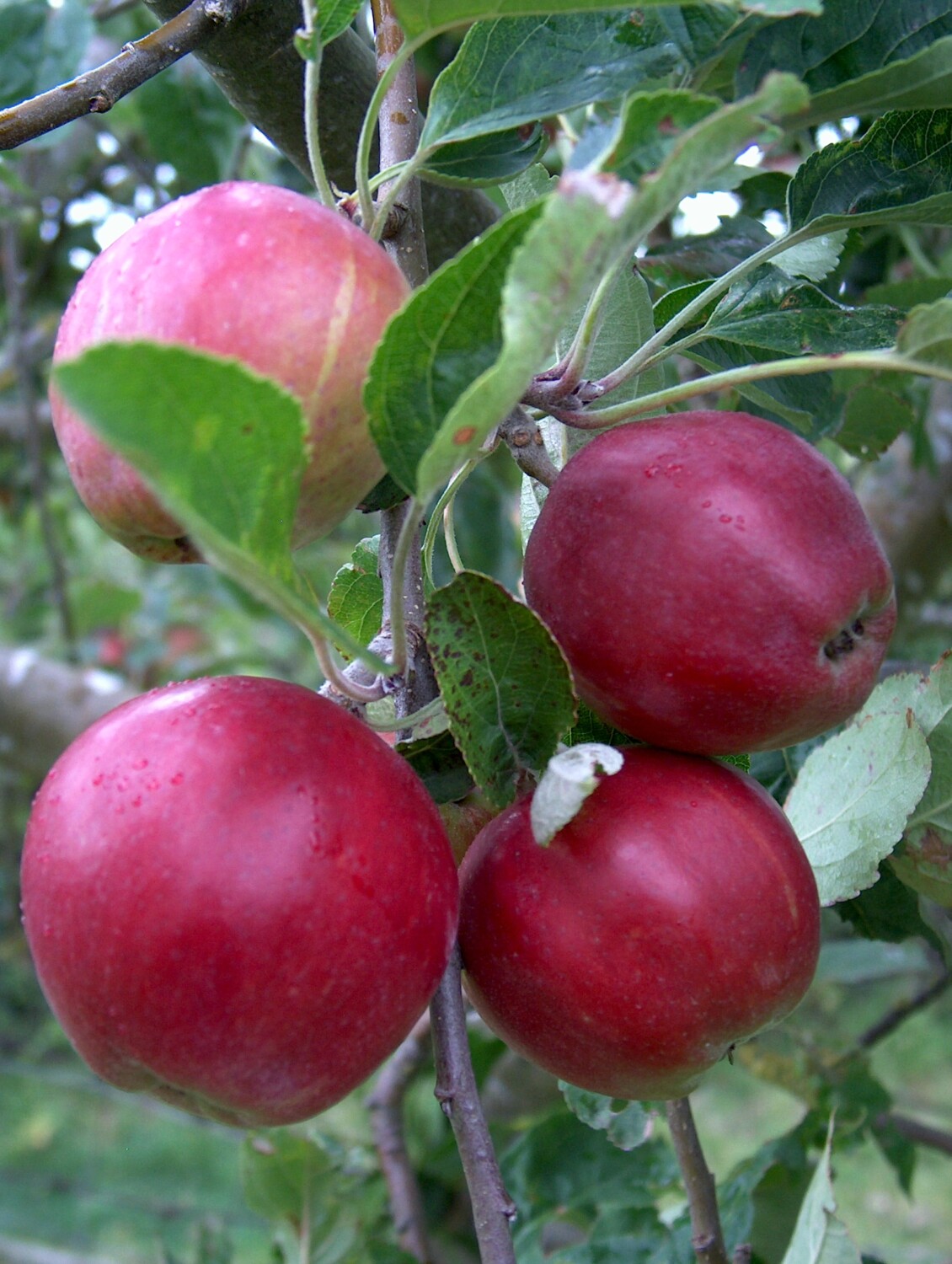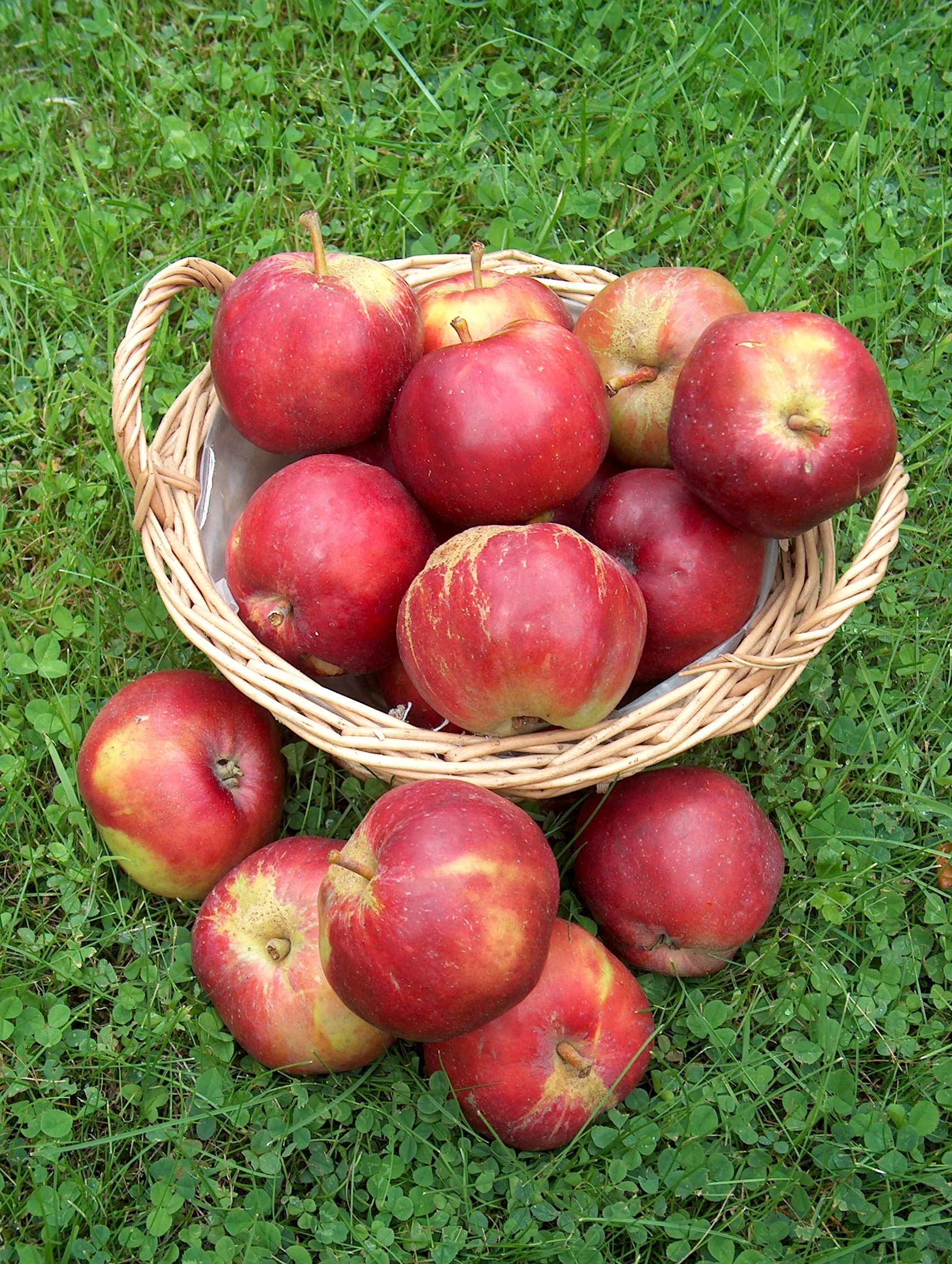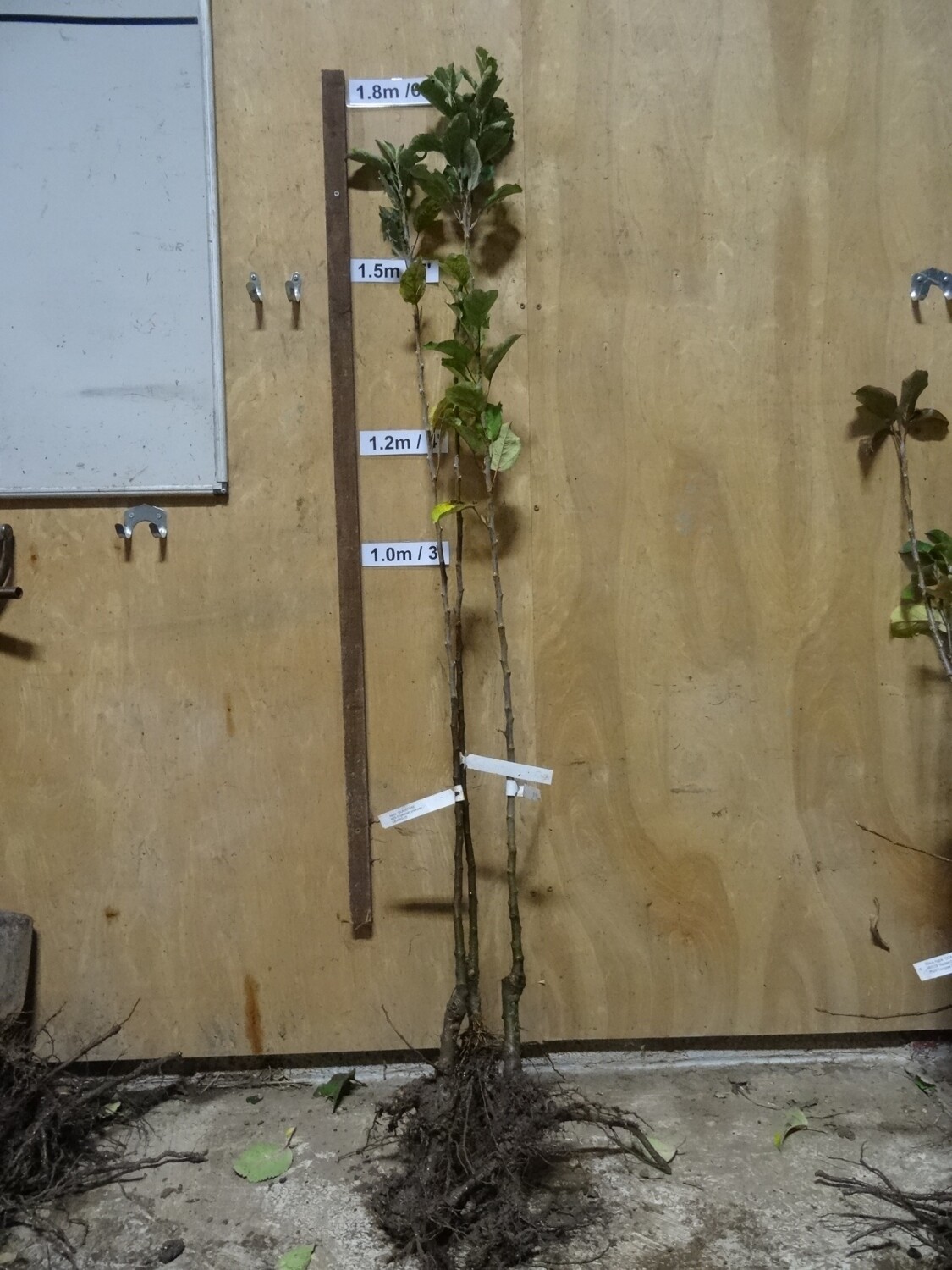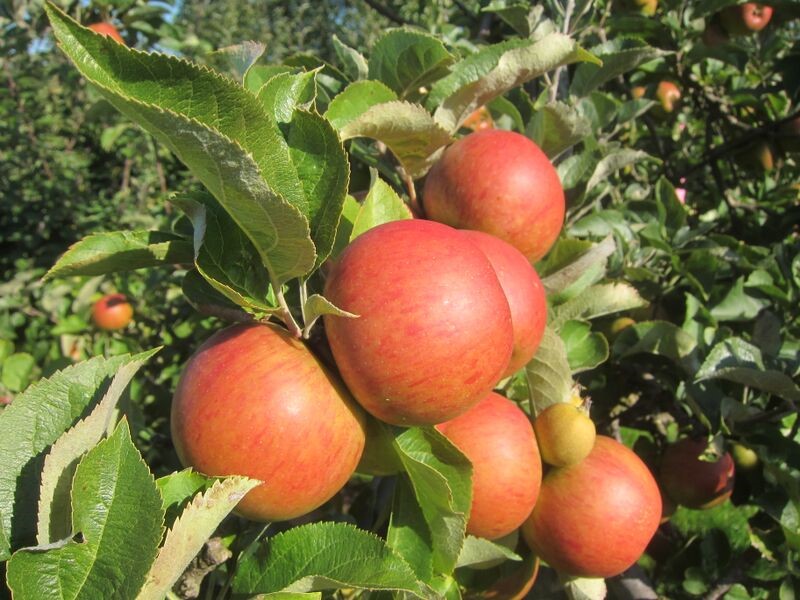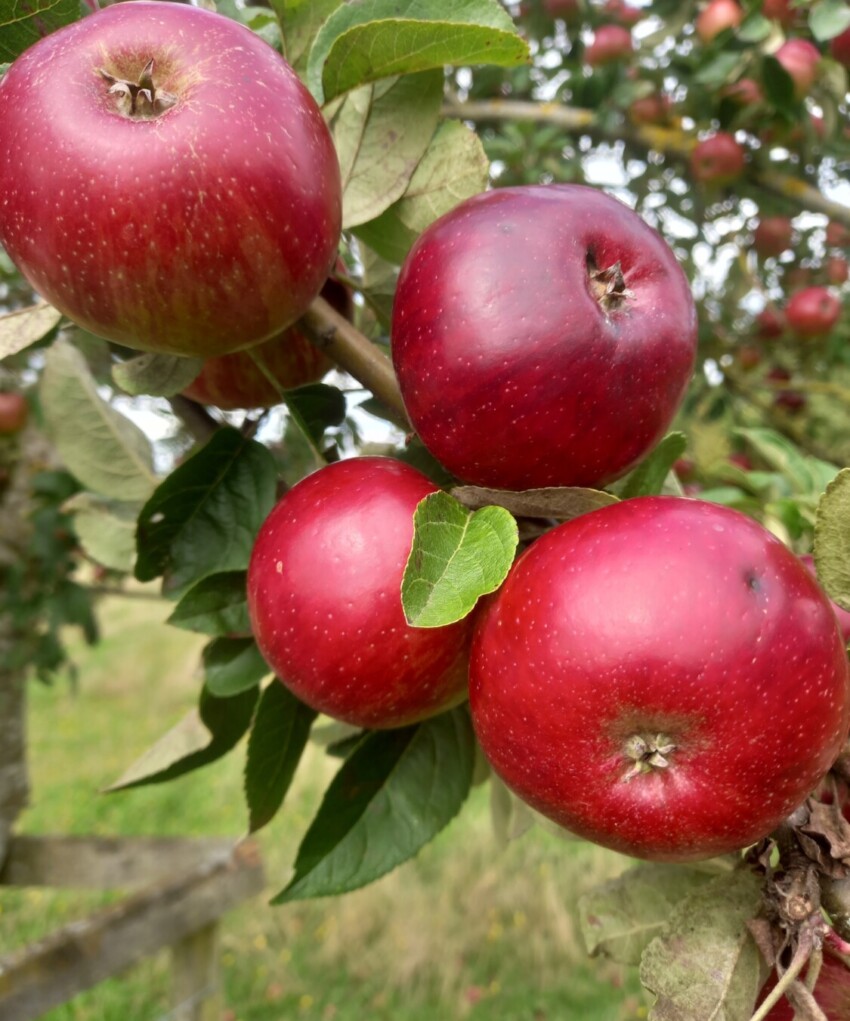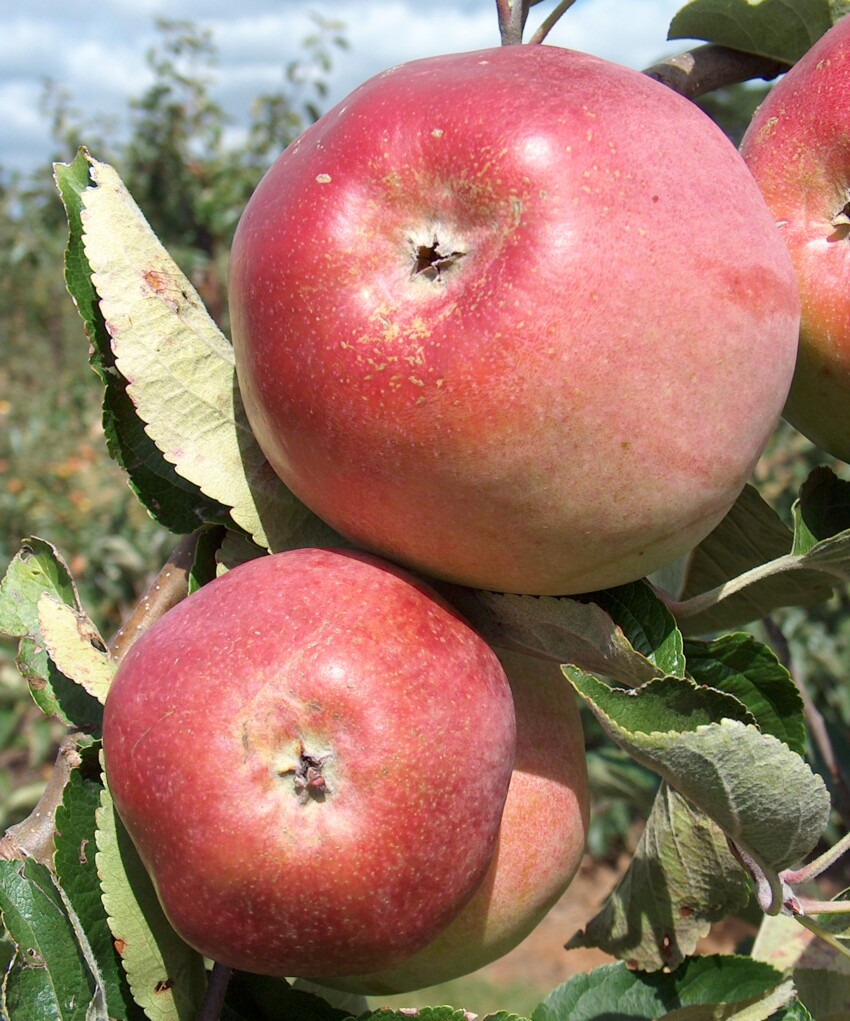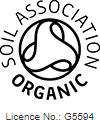| Dimensions | Regular carton size |
|---|---|
| Rootstock | M25 maiden (vigorous) |
| Type of Apple | Dessert |
| Fruiting | Early Season |
| Pollination Group | C |
| Pollination Requirements | Not Self-fertile |
| Fruit Bearing | Partial Tip-bearer |
Gladstone
Gladstone is a very early dessert apple best eaten off the tree from late July. Very good flavour, sweet and juicy. Surface almost all covered deep or brick red developing a greasy feel.
Pollination group – C
Picking time – late July
Storage until – does not keep
£21.75
Gladstone is a very early dessert apple that is best eaten off the tree from late July. Very good flavour, sweet and juicy. Surface almost all covered deep or brick red developing a greasy feel. Medium sized apples round conical with some broad ribbing that converges into a ‘crown’ at the apex.
To enjoy its flavour the best pick while still on the tree and the apples are not too deep red. Apples that have fallen can be soft and unappealing.
Arose about 1780 presumably as a chance seedling. Named as Jackson’s Seedling somewhat later in 1868 when first introduced but renamed Gladstone in 1883 after the then Prime Minister. A Worcestershire apple raised on a nursery near Kidderminster
This is a good variety to plant if you wish to have a wide period of fruit ripening and are planting a selection of trees because it ripens so early. A more well known apple that ripens about the same time as Gladstone is Beauty of Bath. It is more well known through the UK being a commercial apple in the days before we imported fruit from around the globe and had such good storage facilities.
Pollination group – C Picking time – late July Storage until – does not keep

